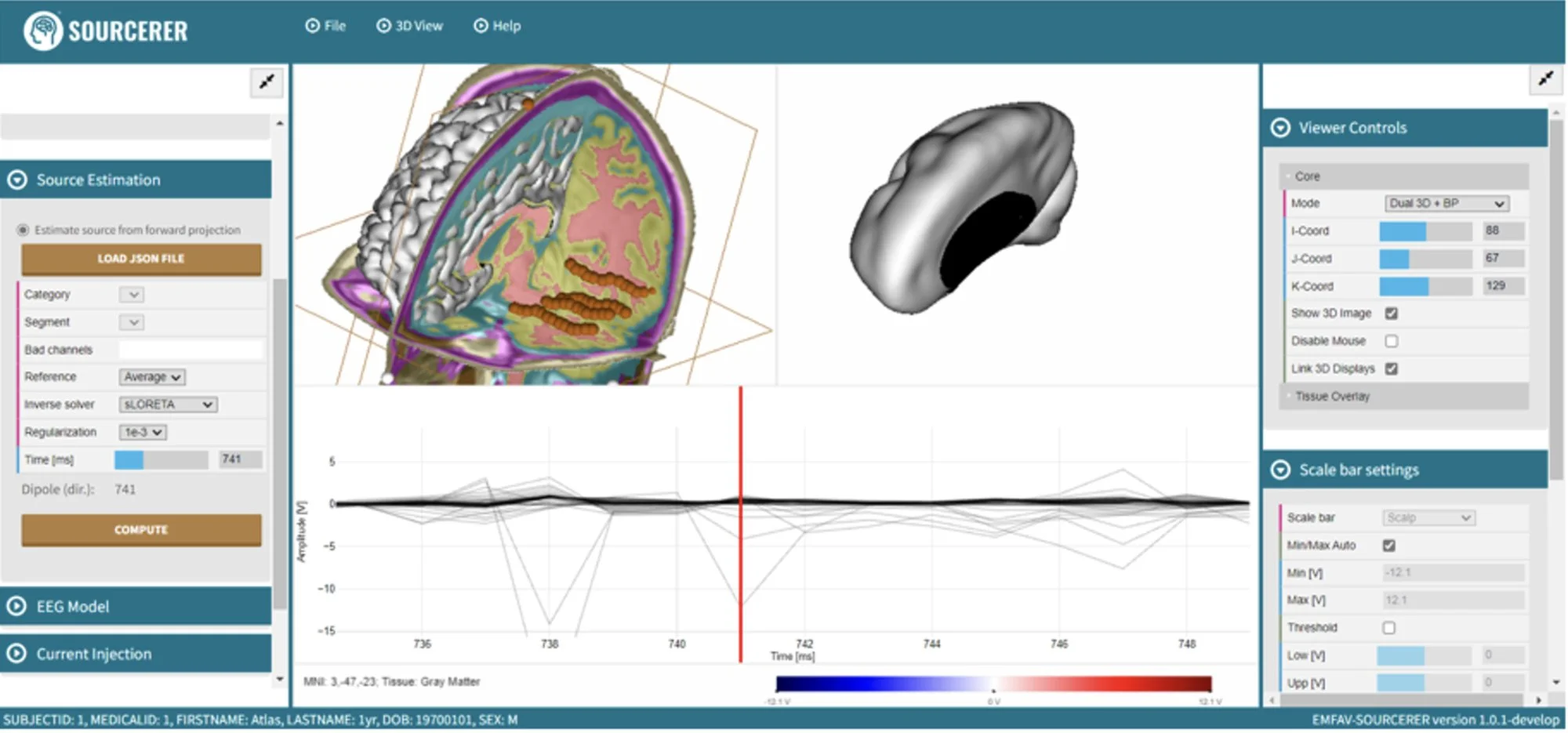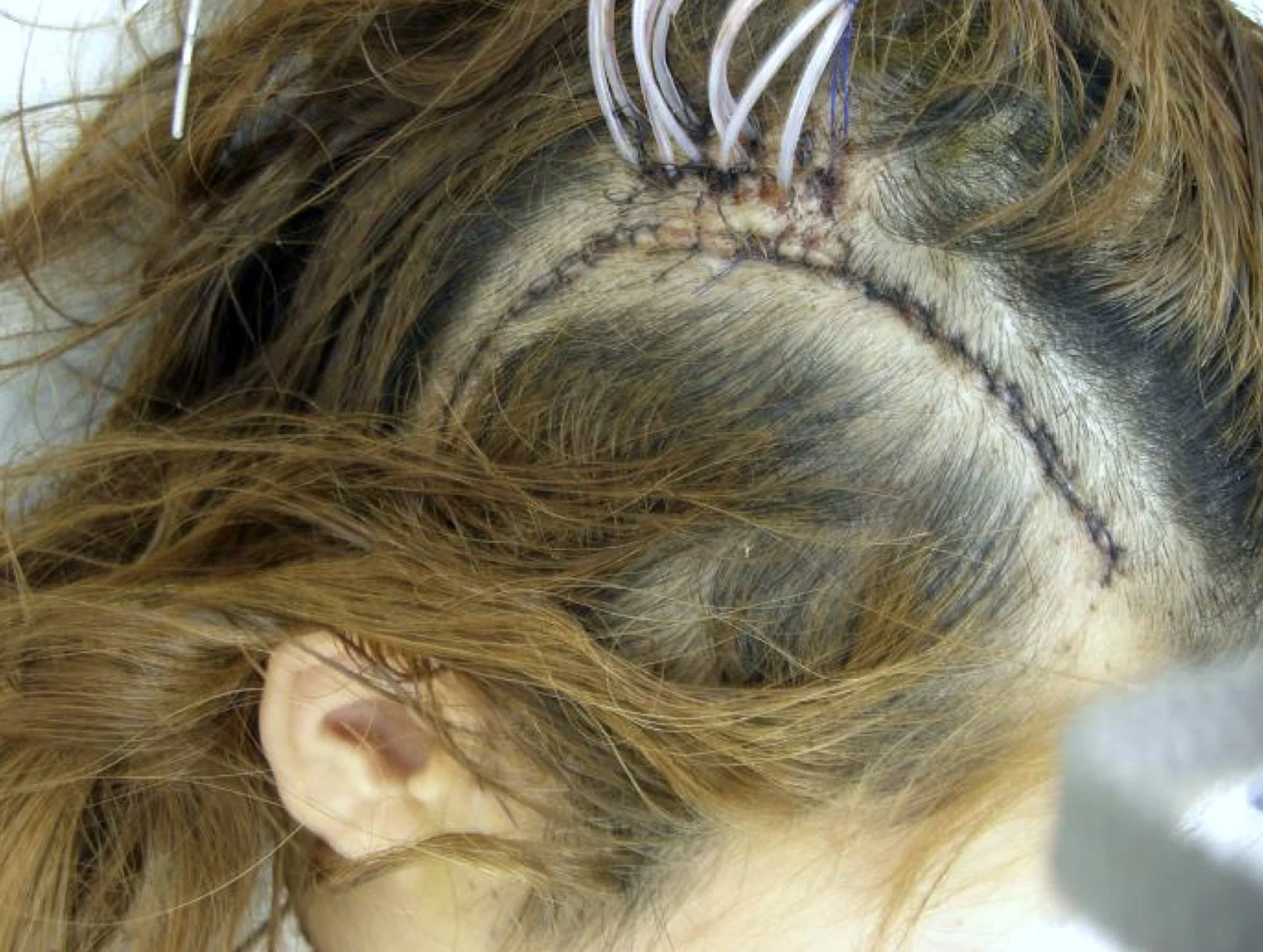Neurosurgical Planning with SOURCERER and BEL System One
BEL’s SOURCERER software for HDEEG source localization has now been approved for use in neurosurgical planning for removing the seizure focus in epilepsy.
In this screenshot of SOURCERER software, the rows of red circles are the electrode contact points on depth electrodes registered precisely with the electromagnetic head model used in SOURCERER’s localization of noninvasive HDEEG measurement of epileptic spikes and seizures.
SOURCERER now provides all of the steps in the workflow for localizing seizure onset from noninvasive HDEEG data: registration with MRI, precise localization of the electrode positions on the head surface, brain tissue segmentation, head tissue conductivity estimation, and dipole inverse source localization.
An important advance, now included in SOURCERER’s methods, is the Bayesian Multiple Sparse Prior constraints for HDEEG source localization. This advance allows clearer delineation of the likely zone of seizure onset than previous EEG and MEG localization methods.
The validation of the accuracy of HDEEG localization of spikes and seizure onset has been achieved through registration of the noninvasive HDEEG data with intracranial electrode localization. Once the wound from the intracranial electrode implant has healed for several days, safe application of the HDEEG electrode array can provide simultaneous noninvasive and invasive recordings.
High-Density EEG Accurately Localizes Epileptic Spikes Despite Skull Attenuation
The recordings from the intracranial electrodes near the epileptic spike (at left) shows a robust spike signal. The recordings at the head surface (at right) show small signals, reflecting the attenuation of the electrical fields by the resistive skull. Nonetheless, with the large number of channels of whole head HDEEG, an accurate localization from HDEEG aligns closely with the intracranial recording.







